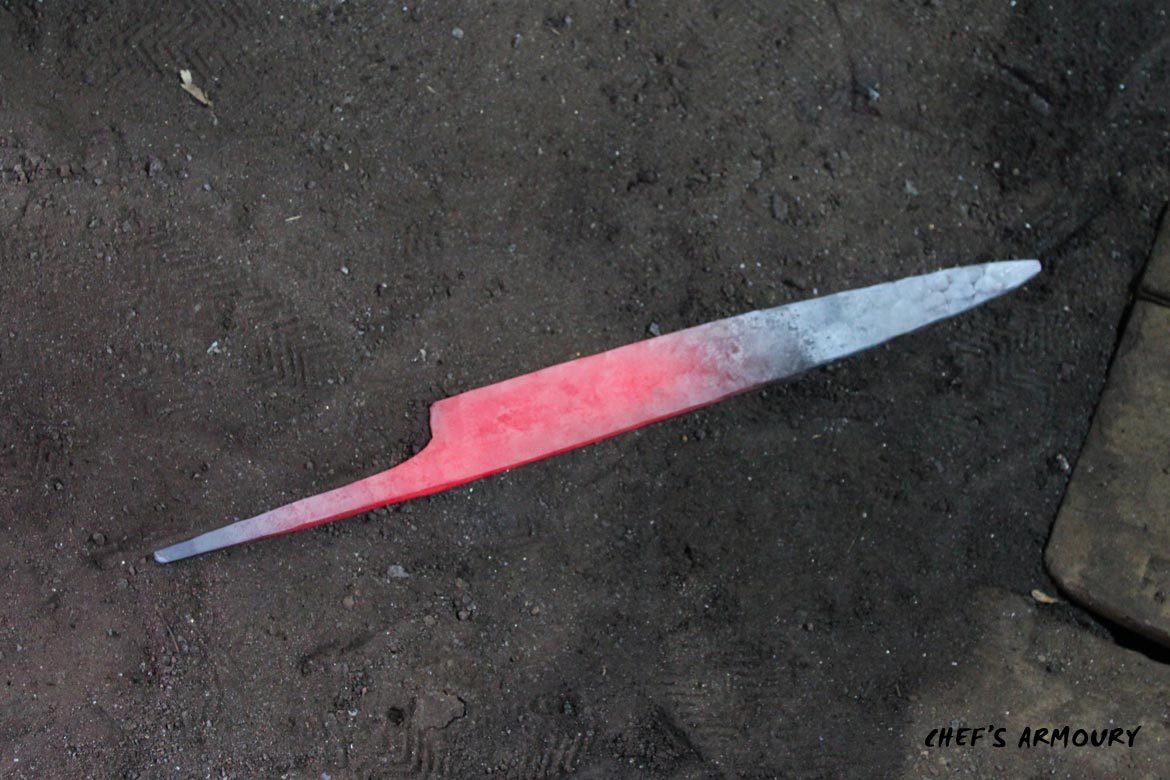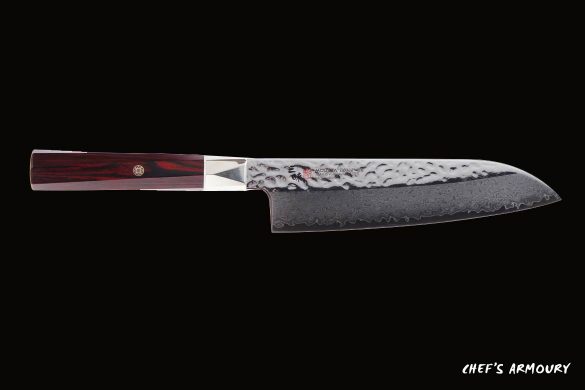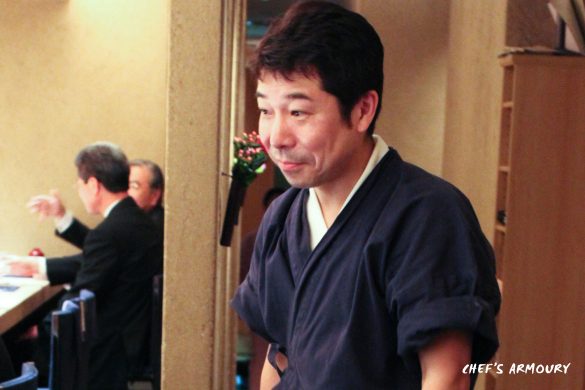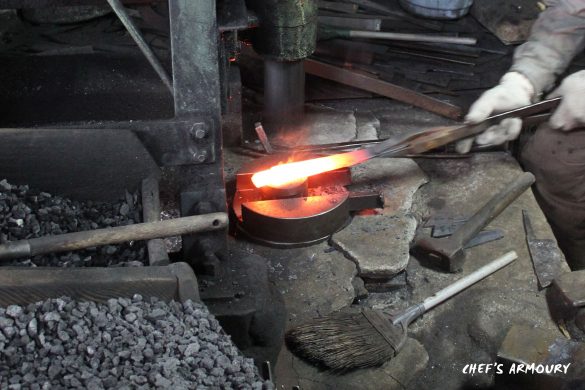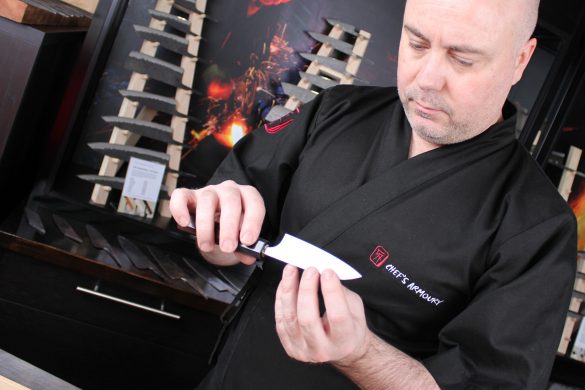There are half a dozen ways that Japanese knives are made but none as romantic as hand forged. It is said the blacksmiths of Sakai are the best in Japan and amongst their number is 83 year old Keijiro Doi.
We feel so privileged to visit the workshop of Master Doi to witness his brilliance in hand forging Japanese knives.
Today Master Doi is forging a 300ml single edged Japanese knife using blue steel. The blade starts as a rod of soft iron (jigane) which is heated in a furnace of around 1000 degrees celsius. The blue steel (hagane) is attached to the red-hot iron and returned to the furnace.
When the blade reaches the desired temperature it is shaped using an A-frame air hammer. Master Doi knows intuitively the right time to remove the blade from the furnace by observing the colour of the metal and many other indicators learnt from his 60 years at the helm of the furnace. Temperatures are almost unbearable but he is calm and accurate as sparks fly from the hammer.
The forging process goes back and forth between furnace and hammer and you can slowly see the blade take shape.
Although the hand forging process is the most impressive part, the knife is only 10% finished at this stage. The blacksmith (or generally his apprentice) is responsible for “cold forging” – stretching and evening out the blade by hand with a hammer. After cold forging, the blank is roughly shaped on a grinding wheel and then tempered in order to give the steel long lasting hardness.
The hand forged blades are then sent to the Master Knife Sharpener.
We also visit the local blacksmith’s bar in Sakai the dress code is T-shirts with burn holes and more than a few regulars show the scars from the furnace complete with missing parts of ear. Not surprisingly ice cold beer is a popular drink.

